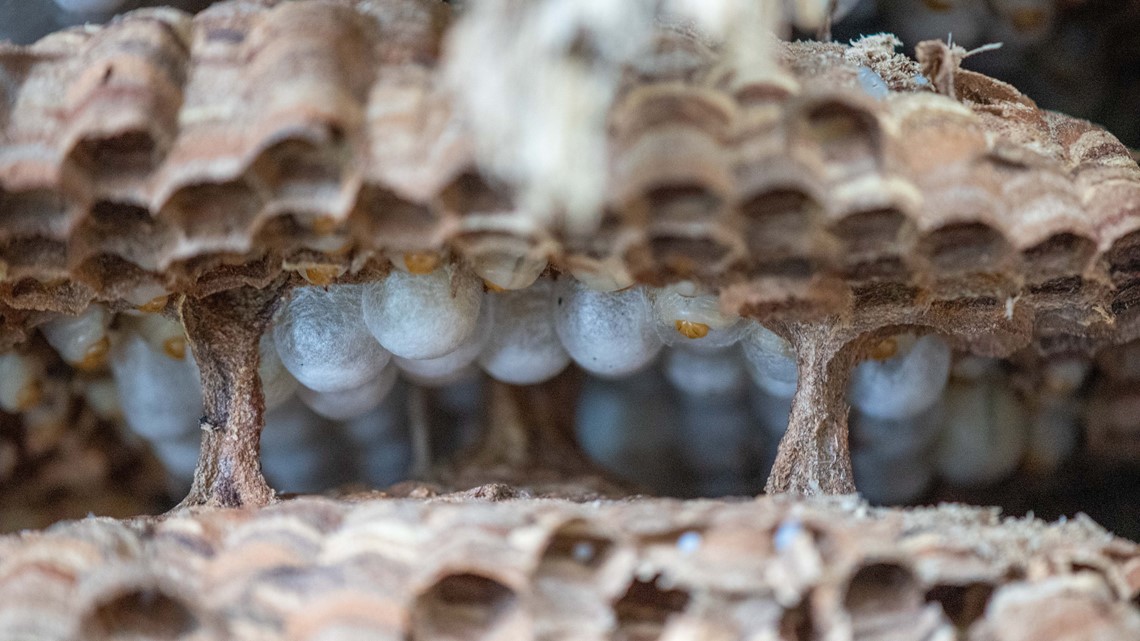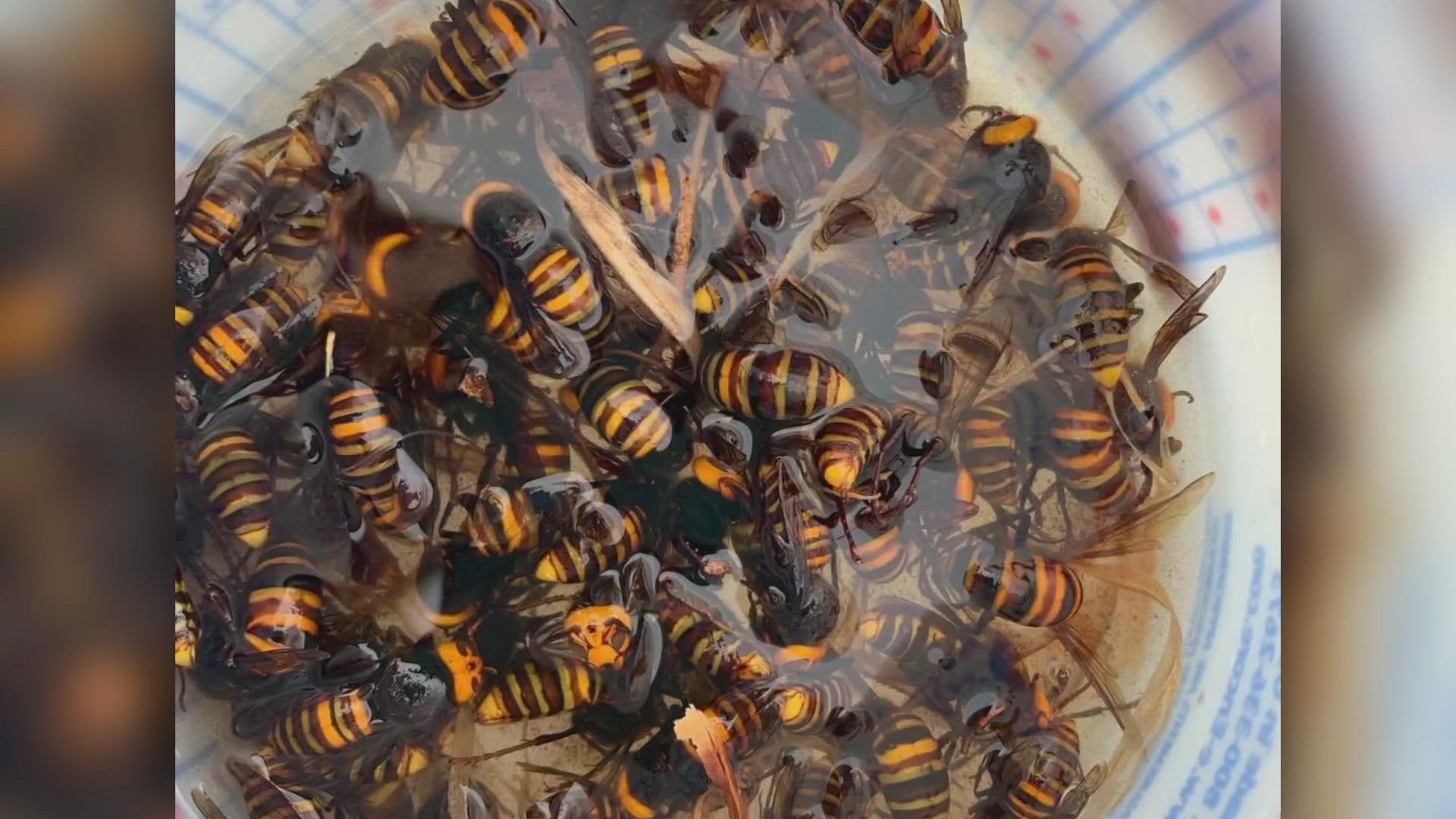SEATTLE — Dr. Chris Looney from the Washington State Department of Agriculture's (WSDA) Pest Program led a webinar on northern giant hornets Wednesday to discuss tracking and trapping methods.
The WSDA has been working to try and eradicate the invasive species from the Washington state since 2019.
The northern giant hornet was first sighted in the U.S. in the fall of 2019 after a nest was confirmed to be in Canada.
There were five additional sightings of the northern giant hornets that year. The Washington State Department of Agriculture set about laying traps to capture the insects. Most traps were concentrated in the northwestern part of Whatcom county near the Canadian border, with additional traps in the Bellingham area.
In 2022, WSDA reported no nests and no hornets in Washington state.
There is still no information on how the species made it to North America.
Dr. Looney and his team at the WSDA Pest Program’s Plant Protection Division study the northern giant hornet (scientific name V. Mandarinia). He wants to learn about their origin, eating habits, flying habits, and nest coming and goings.
The ultimate goal of Dr. Looney and his team is to learn enough about northern giant hornets to be able to remove them from an area quickly and completely.
Multiple studies were conducted to learn more about the northern giant hornets.


Experts already knew that species of the hornet from Asia eat various social Hymenoptera insects, such as honey bees and praying mantis.
By metabarcoding fecal pellets, a molecular process using PCR and DNA sequencing, from northern giant hornets larvae, Dr. Looney was able to determine that the northern giant hornets have a similar diet to that of their relatives in Asia.
Using the information from the results of their DNA sequencing, Dr. Looney and his co-researchers sought to develop better lures for northern giant hornet traps. None of the traps proved to be particularly adapt at catching the hornets.
However, it was noted that a trap made with pheromones from the venom released by a queen caught 282 male hornets 40 workers. The pheromone is a hormonal release that the hornets use as a type of alarm to alert other hornets that something is going on -- often that a nest is under attack.
Dr. Looney and his team conducted several subsequent studies in a remote location in South Korea. Using a system of antennae and sensors, the team was able to receive data about the hornets flight and dwelling habits.
Working with three nests that the team had brought with them, Dr. Looney was able to tag 53 worker hornets, seven males, and 10 queens. A hornet was tagged by trapping it, keeping it in a cooler until it fell asleep, and then working fast to tie a tag around its mid-section before it woke up.


The tags broadcasted from anywhere from two days to a week and would send out data every five to 10 seconds, generating around 9 million tag points during the study's life.
Tag points were added to nest entry points. This allowed Dr. Looney to study how often hornets leave the nest and how long they are gone when they do leave.
The final study he conducted was a tethered flight mill to measure physiological flight capacity, including how fast the hornets fly, how far they fly, and how long they fly.
Dr. Looney and his team plan to return to South Korea in July to continue their research.
WSDA asks that the public report any sightings of northern giant hornets which can be done online. Traps can also be set for the invasive hornet, whose season runs from July until November, although queens may be sighted earlier in the spring.

